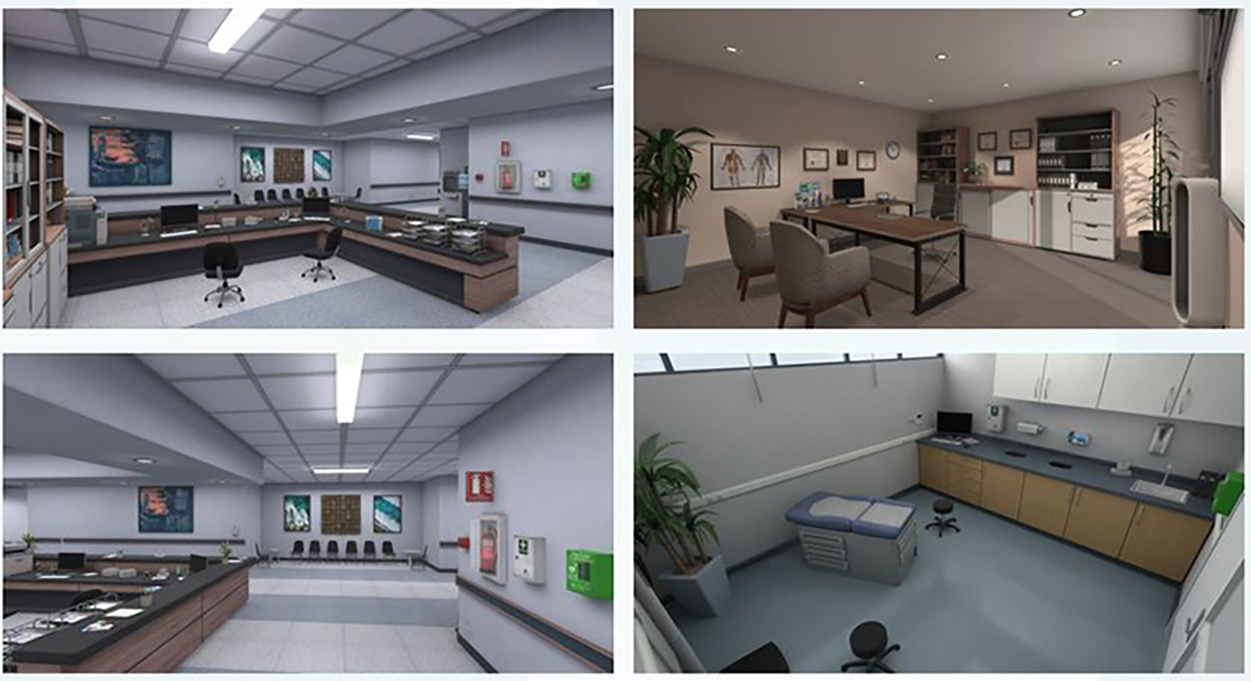Complete Soft Skills Training Guide
Soft skills have long been essential in the workplace, but COVID-19 and remote work have changed how employees and team members interact. These skills are needed to foster relationships and increase productivity as the organization works toward a common goal. They aren’t as easily quantifiable as hard skills and individual worker performance, but they are just as vital to the team’s overall success. Virtual learning and extended reality (XR) provide new opportunities for workers to develop soft skills. Managers and organizations of all sizes can use these tools to improve how they assess and develop their team’s ability to work together.

Understanding Soft Skills
Soft skills refer to a person’s ability to cooperate and get along with those around them, including how they respond to and identify interpersonal problems in the workplace. They include specific tasks, such as:
- Communication
- Coaching and mentoring
- Goal setting
- Leadership
- Negotiation
- Personal accountability
- Stress management
- Responding to feedback
- Critical thinking
- Approaching matters with an unconscious bias
Many of these skills overlap, but communication remains key to success. This interaction can include not only the words a person uses to express themselves but also their body language, response time, and ability to pick up on social cues from others.
Soft skills also focus on the importance of listening to others. The term “active listening” is the difference between hearing and listening. A team member may hear another person’s words without absorbing this information. This can include details such as putting their phone away when someone else is speaking, so they can take in the speaker’s body language and make eye contact to establish trust.
All professionals use soft skills throughout the day, consciously and unknowingly, due to habit. They do so when talking either in person or virtually with others, including through e-mails and text messages. They also use these skills when organizing and completing their work throughout the day, such as prioritization, time management, and creativity.
However, these skills are difficult to identify, measure, and document. They may manifest differently in each participant or go unnoticed in the workplace, disincentivizing workers from utilizing them in their daily operations. Managers cannot add details such as eye contact, body language, and word choice into a spreadsheet when reviewing a worker’s soft skills.
Soft Skills vs. Hard Skills
Soft skills are the reverse of hard skills, which refer to quantifiable abilities with measurable success rates, such as a person’s ability to write, design code, or use specific types of software. They also refer to a person’s educational background and experience level, such as where they went to school and the number of years they have worked in the industry.
Managers often hire workers based on their hard skills, as they signify the worker’s ability to get the job done, but workers need to possess a combination of hard and soft skills to be successful in the workplace. They must communicate with clients and colleagues and support the organization’s mission. There are dozens, if not thousands, of candidates with similar resumes and accomplishments, and soft skills are often used to further assess the person’s abilities.
Many organizations look for candidates with soft skills during the hiring process, but they are often difficult to assess during the job interview alone, especially when conducted virtually. The candidate may also be nervous during the first or second meeting, which could negatively affect their soft skills at the moment.
The interview also doesn’t allow the candidate to show the manager how they would use these skills in the workplace. The meeting is mainly conversational in nature, not task-focused. The manager could opt to have the candidate work alongside existing employees to assess their soft skills better, but this can be expensive and time-consuming for both parties.

Soft Skills Training for Organizations
There is a myth that managers cannot teach workers soft skills, but this is false. Developing soft skills is much more nuanced than learning a new complex skill, such as computer programming. A person can easily take a class on a new subject, but learning to listen and communicate effectively requires patience and consistent feedback. Some individuals may be naturally suited for leadership roles, but existing workers can learn soft skills under the right circumstances.
Many organizations lack the proper tools and resources to train their workers on soft skills, such as relationship-focused educational content, experienced instructors, and appropriate skill assessment models that track individual progress over time.
There are several components to a successful soft skill training session. Employees can learn from situation-based exercises that require them to interact with other team members. This can include in-person, and remote learning experiences conducted one-on-one or in a group. They should also be able to research subjects and access resources independently to further their learning. Some individuals may need additional assistance or training outside the planned curriculum, and an instructor or team leader should be available to answer any questions.
Assessing soft skills should also be unique to each individual. Not everyone communicates in the same way. When creating the content and instructional training program, to increase engagement, a person’s background and language preferences, including generational differences should be considered. Younger generations, for example, tend to prefer customized learning materials with visual elements.
These skills will also need to be reinforced in the workplace to ensure workers have retained what they have learned. This may include having workers report on what they have learned at the end of every session, checking in on their progress after several months, creating a workplace learning culture, and encouraging workers to ask questions.
The organization’s members will struggle to utilize these skills unless the leader also puts them into action. This person will need to set an example for how to use soft skills in the workplace, so workers can see these concepts play out in real-life settings.

VR & Soft Skills Training
Companies have long used virtual reality and digital learning platforms to train their employees, such as flight simulators and those for safety procedures and equipment operation and maintenance, but this same technology can be used to develop an individual’s soft skills.
Immersive soft skill learning through VR can enhance participation and the user’s ability to retain information compared to classroom-based learning and e-learning using traditional online teaching platforms.
According to a recent survey from PwC’s Emerging Technology Group that analyzed the success of a pilot VR soft skill training program, VR learners were up to 275% more confident about acting on what they had learned after training, marking a 40% improvement over classroom learners and 35% improvement over e-learners. Additionally, VR learners were up to four times more focused than e-learners. They completed training on average four times faster than classroom training and 1.5 times faster than e-learners. VR learners were 3.75 times more emotionally connected to the content than classroom learners and 2.3 times more connected than e-learners.
VR creates a safe, customizable learning experience for users to develop their soft skills without fear of retaliation or error. The user can speak to a virtual human being in a specific situation, while the manager can quickly review their listening and communication skills.
One example is the Talespin platform, which provides an immersive extended reality environment for employees to learn. It uses artificial intelligence to create simulated, realistic conversations that workers can use to develop their skills. The simulation includes natural conversation features, including body language, eye contact, and personality. There is no fear of judgment or failure, as there would be in a group setting. The dashboard software program allows the manager to assess a range of key performance indicators, including individual performance and scoring, skills analysis, and content delivery.
The platform also provides access to a wide range of off-the-shelf education content to help workers further enhance their learning. Organizations can also create their learning exercises without writing code.
Virtual learning can also be more cost-effective than classroom learning and e-learning. It is easier to scale, making it suitable for organizations of all sizes. The savings depend on the number of learners involved in the organization. AT 375 learners, VR training can cost less than classroom learning; at 1,950 learners, training in virtual reality can cost less than e-learning.
Many organizations do not equate VR with soft skills, but this technology is changing how managers train and develop the next generation of workers. Soft skills remain the backbone of professional relationships. They are needed to help individuals and companies succeed. When the hard skills end, the soft skills begin. Companies can improve their learning materials with virtual reality.
About Elara
Based in Northern California, Elara is a strategic creative agency that develops digital content for medical and industrial markets across the globe. For 20 years, Elara has partnered with clients to develop creative solutions to showcase their vision and transform digital content mediums – including virtual reality, mixed and augmented reality, 3D, and video. They specialize in creating deeply interactive experiences for teaching, training, marketing, and sales. For more information, all parties should contact us at information@elarasystems.com.
